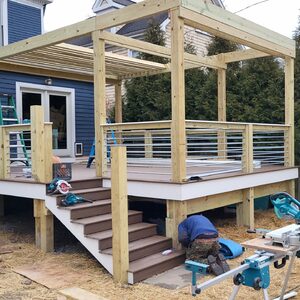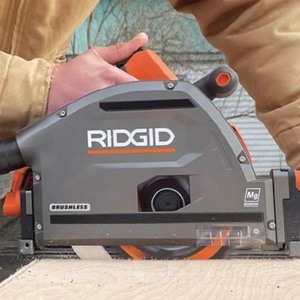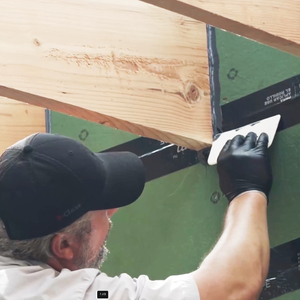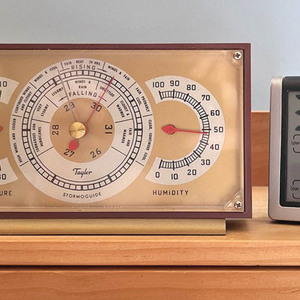Why Didn’t a New Roof Stop My Attic From Getting Wet and Moldy?
Hi All,
I am a first time homebuyer – just bought my first home. When I bought this house, I knew there was mold in the attic and had a plan to get a new roof upon moving in – which I did. Its been about 4 months since the roofing company ripped off all the old shingles along with the plywood, and installed all new plywood, soffit vents, and a ridge vent.
In those 4 months, we are already experiencing mold in the attic up to the top of the baffles in some places (they also did the insulation for half of the roof on top of a cathedral ceiling). In addition, nail heads are wet and in one area on top of the cathedral ceiling I can reach in and feel that the insulation is wet as well.
Does anyone have any suggestions for how to go about this? We’ve talked to the roofers who are reluctant to help, but have offered to install more ventilation. However, part of the reason why we hired them in the first place was to avoid these issues and take care of the mold. No way mold should be growing within 4 months of installing a new roof..! Especially with “proper” ventilation.
Ideally, we’d want them to rip off the roof as the plywood with mold is deterrent for if and when we want to sell the home.
Any advice or suggestions are greatly appreciated as its very disheartening knowing its there after spending so much for this project.
Thank you,
Tyler


















Replies
Unfortunately it sounds like your ceiling is leaking warm moist air and condensation is happening faster than the drying. Make sure you get the ceiling airtight as you proceed. What kind of ceiling do you have - is it drywall?
Hi Duane,
We have drywall with a plaster coating. I think, by the looks of it, its from when the house was originally built in the 1970's. The pull down ladder to access the attic is not air tight, but relatively tight. Do you think a fan/dehumidifier in the attic would help? The mold remediation company didn't install.
Thank you for your reply!
Tyler
I don't see how your roofers could be responsible for a moisture problem you had all along. As others have mentioned your problem is air leakage from your house into your attic. The first place to start is with your bath vent fans. Make sure they are working, air sealed and have insulated ducts exiting the envelope of the house. If you ahve a crawl space you'll need to make sure it's sealed as well.
Hi Florida,
I am not sure if I had a moisture problem beforehand - this is what I am trying to determine. The mold that was in the attic previously was because there were absolutely 0 soffit and ridge vents - the only ventilation was a small gable vent on the side. The attic was stuffy, humid, and extremely hot. I was hoping with the new ventilation system and insulation installed by the roofing company that I would not have any mold growing in the attic. Would it not be their responsibility after installation after we clearly addressed our concerns with them and the work they put forth was to remedy these issues? Just looking for some advice as a first time homebuyer/owner.
Thank you,
Tyler
Where are you located? What kind of insulation do you have? What kind of heating system? If ductwork, are any ducts in the attic?
Assuming the new ventilation is working, it sounds like you may have a relatively big air leak somewhere going into the attic. Where do the bathroom and kitchen fans exhaust to? They should not be exhausting into the attic.
If you have a dehumidifier, you could use it to start drying the house. I probably would just leave the dehumidifier in the house and not the attic. Do you know what the humidity levels are in the house? A dehumidifier and fan shouldn't be needed long term.
Check out these for more air-sealing information:
https://www.finehomebuilding.com/2013/10/23/video-series-air-seal-an-attic
https://www.greenbuildingadvisor.com/article/how-to-insulate-and-air-seal-pull-down-attic-stairs
https://www.greenbuildingadvisor.com/article/getting-the-biggest-bang-for-your-air-sealing-buck
I have been sealing my house and it makes a huge difference in my heating. I have the typical ceiling can lights, chimney, plumbing vent, and electrical boxes all going into the attic.
Hi Duane,
Thanks a bunch for these posts! I didn't realize how much air is likely getting up there because this type of pull down attic is exactly what we have. As for the insulation, we have faced R-38 on the drywall ceilings and then faced R-15 on the walls. We have gas heating with the furnace downstairs and only one vent from the bathroom that leads outside. This vent was just installed (didn't have a vent in the bathroom before purchase) and has been airsealed at both ends.
From this, it seems likely that I'll need to upgrade the stairs and seal there.
Thank you again!
Tyler
I suspect that you have a major air leak into the attic. Perhaps some bad ductwork?
I thought I had replied, but don't see it showing up. Another major leak possibility would be the bathroom fan. Where do the bathroom and kitchen fans exhaust?
they should exhaust thru a roof vent, but i have a feeling in your house they dont, i know im VERY late but maybe this will help someone else?, check the ducting from your bathroom and kitchen fans and make sure it goes thru a roof vent
Thats a lot of mositure though...I would be checking to see if your furnace flue and/or your water heater flue is rusted out and/or disconnected. A bathroom fan dumping in there would also do it if your are in the habit of taking really long showers and or steaming long baths.
Not really sure what you would sue them for. If the roof isn't leaking and they installed the soffit and ridge vents as is normal practice in the industry, then you will likely fail in any suit. They aren't responsible for dumping too much moisture into the attic.
Hi Cussnu,
That's a good point - I didn't think about it that way. Definitely need to have a pro come check it out. I was unsure about the nailheads mostly and if water was seeping through the shingles.
Thank you,
Tyler
A roofer is generally hired to keep moisture form getting into your house. Your problem appears to be getting the moisture out. Dew points and condensation issues in homes generally occur in the heating months when warm air comes in contact with cold surfaces. I didn't see where you addressed your location, but that would be helpful in others understanding your dew point and condensation risks. As others have rightly pointed out, the primary culprit of this condensation and resulting mold phenomena is air leaks within the building envelope. How to do this? Remember, for mold to propagate, it needs a steady supply of warm temperatures (above freezing), a food source (cellulose is good one available in most homes), and moisture (including a relative humidity of 70% or more. Cancel one or more of those, then your problem with mold is greatly diminished or abated.
1. Sealing and properly venting bath and kitchen ducts and vents. This is a given.
2. Locate any and all air conditioning equipment and ducting, if possible, fully within the conditioned building envelope.
3. Well air sealing the building envelope between conditioned space and an unconditioned attic. This may mean removing all existing insulation and spray foaming a 2-3" layer of open cell polyurethane foam that can seal framing and drywall junction gaps in conditioned ceiling envelope. Then restore code level, or better, insulation layer.
The last strategy you want to employ is hiring a lawyer to solve your problem. The only winner in that scenario is the lawyer. The big loser will be your bank account. Meanwhile your house stays wet.
This sounds like one of the worst case scenarios used to teach the hazards of mishandling indoor humidity. Your roofers might have recognized the problem, but some contractors regard such problem solving as outside their agency. You can't really make a case that they were obliged to do anything but what their contract specified.
Your choice is whether to pass the problem on to the next owner or solve it yourself. If solving it is your task you can hire a specialist to inspect the house and give you a checklist of the problems or start your research . Green Building is a superb source of info, as well as Building Science Corporation which has a great library of past articles. https://www.buildingscience.com/users/joseph-lstiburek
Then address what you feel you can handle yourself and get conscientious hired help for the rest. It could be a long road since it's obviously a serious problem, or it could be very straight forward.
The humid air getting into the roof cavities is clearly the main problem. Decreasing sources of humidity is probably right behind.
Someone already posted links to some good FHB articles. I'd add that in my experience as an editor at that magazine and as a contractor, mold in the attic is almost always associated with a damp foundation coupled with a leaky house. Make sure your basement or crawlspace is dry - Lots of articles on that in the mag. Then air seal the house. This particular video is really helpful. https://www.finehomebuilding.com/2013/10/23/video-series-air-seal-an-attic